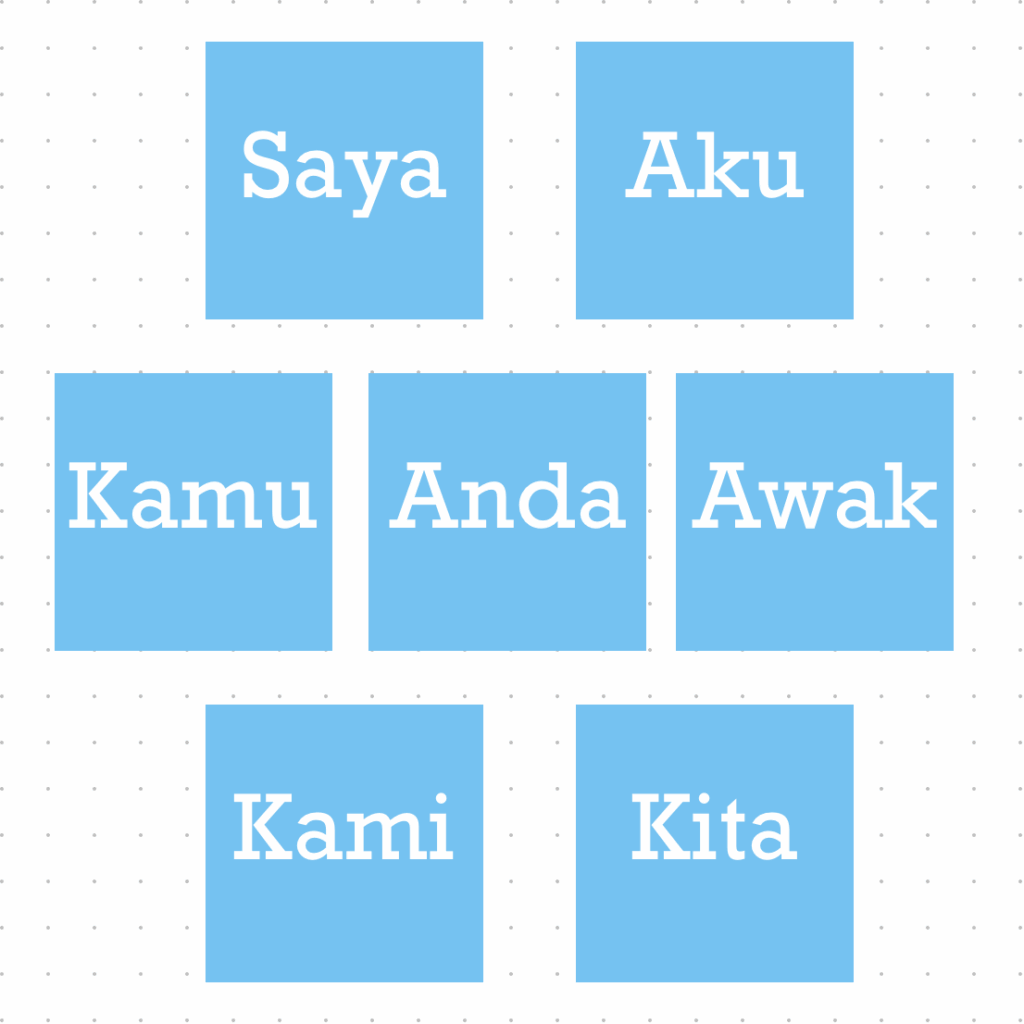
Pronouns are a tool built in to nearly every language to help make discussing people, places, and things easier and more efficient. They should be quite familiar to English-speakers who differentiate between subject and object pronouns along with indicating possession (I/me/my, He/him/his, She/her/hers, etc.), and they are commonly used in Malay as well.
The pronouns used in Malay tend to have very specific use-cases which may be tricky for learners, but understanding when and where to use each one is vitally important if you want to both produce and understand Malay properly.
Let’s dive on in and see the important distinctions between these very common words!
First-person pronouns:
First-person pronouns are simply the words that a person would use to describe themself. In English, if the speaker is the subject of the sentence they would use “I”, as in:
I eat vegetables.
If they were the object of the sentence they would use “me”, as in:
The dog bit me.
English also uses pronouns to show possession, including the first-person “my” or “mine” with “my” modifying a noun and “mine” replacing a noun, as in:
Where’s my phone?
Back off, it’s mine!
Easy stuff, right? So how would Malay speakers indicate themselves in a sentence? Well, the answer isn’t quite so simple.
Saya and Aku
In common modern Malay, the first-person pronoun is typically one of two words: saya and aku. Both function the same grammatically, and can encompass subject-, object-, and possessive-pronouns.
For example, all of the following are proper usages of these pronouns:
Saya/Aku makan pisang.
I eat banana(s)
Mak bagi saya/aku roti.
Mom gave me bread
Baju itu saya/aku
That’s my shirt / That shirt is mine
So what’s the difference between saya and aku? Mostly culture and the social power structure.
Saya is the generally formal word and can be appropriately used in most contexts. If you are in a work setting, school setting, or just generally speaking to anyone who is not a close friend. Even among close relations, it is still considered respectful to refer to one’s self as saya.
Aku, on the other hand, should only be used amongst close friends. It would be considered wholly inappropriate for someone at a lower level of a social power dynamic to refer to themselves using the word aku, such as a student to their teacher or an employee to their manager, and the speaker would likely be considered to be quite disrespectful. If you are clearly a language learner and you use aku, you will likely get a pass from the listener, but if ever in doubt, use saya!
Interestingly enough, there are other first-person pronouns but these are only used in very specific cases:
- If you ever find yourself in East Malaysia, in some dialects you might hear people use kita for I/me (though in standard Malay it means “we”/”us”!)
- Kelantanese and Terengganu slang sometimes uses kami as I/me (also means “we”/”us”!)
- If you find yourself speaking to royalty, you should use patik.
- If you are royalty, you are allowed to use beta.
You may also hear people refer to themselves by their social or professional titles, such as using kakak (big sister), ayah (dad), or cikgu (teacher). These terms can be used by the speakers interchangeably with saya when appropriate (ayah to his children, cikgu to her students). Please note these selections are not an exhaustive list.
Finally, it is not uncommon and fully appropriate for a speaker to simply refer to themself by name, foregoing a pronoun entirely. For example, if Ali wants to read a book, it is totally fine for him to say:
Ali nak baca buku.
Ali wants to read a/the book.
So there you have it, first-person pronouns in Malay can actually be quite simple with practice. If ever in doubt, just use saya – it’s always a safe choice!
You can find more info on this topic in Lesson 1 of our Malay Course. You can also check out all of our posts on Malay grammar here!
Questions? Comments? Leave your thoughts below!

Leave a Reply